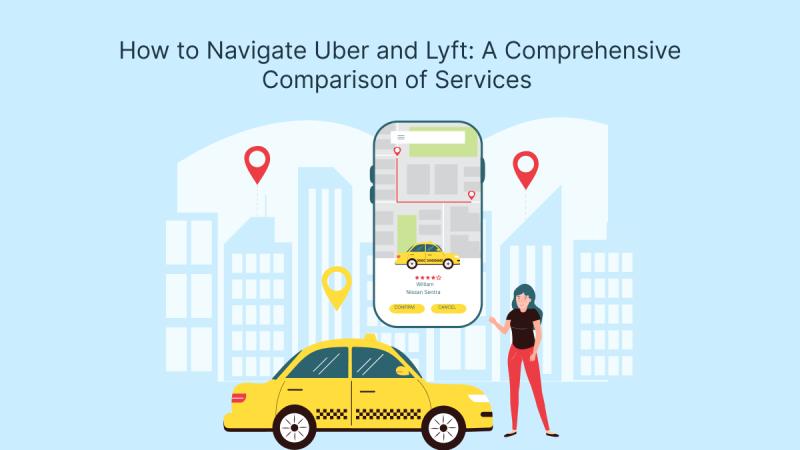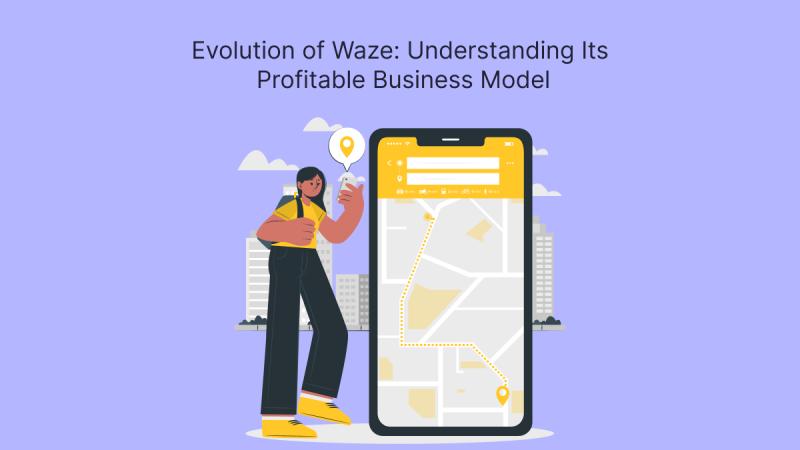How to Navigate Uber and Lyft: A Comprehensive Comparison of Services

Uber and Lyft are the top players in the rideshare industry, offering accessible, on-demand transportation through their mobile apps. While similar in many ways, they also have distinct differences in services, pricing, safety features, and unique offerings. Discover the ultimate guide on Uber vs Lyft to make informed choices. Compare services, prices, and features to navigate your ride-sharing options effectively. Whether you're new to ridesharing or just looking to understand which service is right for your needs, this comprehensive comparison will help you navigate Uber and Lyft effectively.
Overview of Uber and Lyft Services
A Brief Introduction to Uber
Uber was founded in 2009 and has grown to operate in over 10,000 cities worldwide, making it one of the largest and most recognizable rideshare platforms. From its standard UberX service to its premium Uber Black option, Uber offers a range of ride choices to cater to different needs and budgets.
A Brief Introduction to Lyft
Lyft, founded in 2012, is Uber’s primary competitor in the United States. Although Lyft is not as globally widespread as Uber, it’s a dominant force in the U.S. and Canada. Known for its friendly brand and community-focused approach, Lyft offers a similar range of ride types but maintains a distinct reputation for customer service and social responsibility.
Range of Ride Options
Ride Options on Uber
Uber offers a wide variety of ride options, catering to different group sizes, budgets, and preferences:
- UberX: The standard ride option, balancing affordability and convenience.
- UberXL: A larger vehicle option for groups or those needing extra space for luggage.
- Uber Black: A premium, luxury option with professional drivers and high-end vehicles.
- Uber Pool: A shared ride option where passengers headed in similar directions can split the fare.
- Uber Comfort: Uber Comfort offers additional legroom and a more comfortable vehicle.
- Uber Green: A more eco-friendly choice with hybrid and electric vehicles.
Ride Options on Lyft
Lyft also provides a diverse range of ride options with a similar selection:
- Lyft Standard: The basic and most affordable option.
- Lyft XL: Ideal for groups or passengers with larger luggage.
- Lyft Lux: High-end vehicles for a premium experience.
- Lyft Shared: A shared ride that allows users to split fares.
- Lyft Lux Black: A premium black car service for professional, luxury rides.
While Uber offers a slightly wider range, especially with its Uber Green option, Lyft still covers the essentials for a convenient and customizable ride experience.
Pricing Structure and Cost Comparison
How Uber and Lyft Calculate Pricing
Both Uber and Lyft calculate fares based on a combination of base fare, per-mile, and per-minute charges. Prices vary depending on factors such as location, time of day, and demand. Here's how pricing breaks down:
- Base Fare: A fixed starting fare that applies once the ride begins.
- Per-Mile Rate: A fee based on the distance traveled.
- Per-Minute Rate: A fee based on the duration of the ride.
Surge Pricing and Prime Time
Both Uber and Lyft use dynamic pricing to adjust fares during peak times, such as rush hour or special events.
- Uber’s Surge Pricing: Uber’s surge pricing can lead to significant fare increases during peak times, which is communicated upfront in the app.
- Lyft’s Prime Time: Lyft uses a similar system called "Prime Time" but tends to be less aggressive in price hikes compared to Uber. The price increase is typically a fixed percentage rather than a multiplier.
Subscription Plans
Both Uber and Lyft offer subscription plans to help frequent riders save on fares.
- Uber Pass: Uber Pass offers discounts on rides, priority support, and free delivery on Uber Eats for a monthly fee. It's a good option for regular Uber users.
- Lyft Pink: Lyft Pink provides a 15% discount on all rides, relaxed cancellation policies, and priority pickups for a monthly fee, making it suitable for frequent Lyft users.
Safety and Security Features
Safety Measures on Uber
Uber has introduced numerous safety features over the years, including:
- In-App Emergency Button: Connects riders with emergency services directly from the app.
- RideCheck: Detects unexpected stops or possible accidents, prompting Uber to check in on the rider and driver.
- Share My Trip: Allows riders to share their trip details with friends or family.
- Background Checks and Safety Training: Uber conducts background checks and safety training for drivers to ensure passenger security.
Safety Measures on Lyft
Lyft offers similar safety measures to enhance the security of both drivers and riders:
- Emergency Assistance: An in-app emergency button that connects riders with 911.
- Send ETA: Allows riders to share their estimated time of arrival with trusted contacts.
- Background Checks: Lyft requires background checks for its drivers.
- In-App Driver Feedback: Lyft encourages users to rate and provide feedback, enabling action on safety concerns.
Both Uber and Lyft prioritize safety, but Uber’s RideCheck feature gives it a slight edge in terms of real-time monitoring.
User Experience and App Features
Uber’s App Interface and Features
Uber’s app is known for its sleek, user-friendly design. Key features include:
- Real-Time Tracking: Users can view their driver’s location in real-time.
- Fare Estimates and Split Fare Options: Riders can estimate the fare before booking and split the cost with other passengers.
- Multiple Stops: Allows riders to add multiple stops to their trip.
Lyft’s App Interface and Features
Lyft’s app also prioritizes ease of use and community engagement. Key features include:
- Friendly Design: Lyft’s interface is bright and user-friendly.
- Fare Estimates: Lyft provides a fare estimate before booking.
- Donation Option: Lyft’s "Round Up & Donate" allows riders to round up their fare to donate to charity.
Uber’s app offers more options for route customization, while Lyft provides community-focused features for a more socially conscious experience.
Rewards Programs
Uber Rewards
Uber Rewards is a loyalty program that allows users to earn points for each ride. As points accumulate, riders advance through levels (Blue, Gold, Platinum, and Diamond) and receive benefits such as:
- Flexible Cancellations: Free cancellation within a set time frame.
- Price Protection on Route: Locked-in prices on frequently traveled routes.
Lyft’s Round Up and Donate
Although Lyft does not have a formal rewards program like Uber, it offers unique perks:
- Round Up & Donate: Riders can round up their fare to donate to charities.
- Lyft Pink Membership: Provides discounts, relaxed cancellation policies, and priority pickups.
Driver and Ride Availability
Uber’s Driver Network
Uber’s large driver network ensures short wait times in most locations. However, availability can vary by city.
Lyft’s Driver Network
Lyft generally has a smaller driver pool than Uber, which may result in longer wait times in some areas. However, in highly populated cities, Lyft’s availability is usually comparable to Uber’s.
Pros and Cons of Each Service
Pros and Cons of Uber
- Pros: Large driver network, diverse ride options, advanced safety features, extensive rewards program.
- Cons: Higher prices during peak times are limited to regions with surge pricing.
Pros and Cons of Lyft
- Pros: Affordable rides, community-focused, social responsibility features, reliable safety measures.
- Cons: Smaller driver pool, limited luxury options, fewer features in smaller cities.
Conclusion
Both Uber and Lyft are powerful rideshare services with unique strengths. Uber’s vast range of ride options, expansive rewards program, and global reach make it an ideal choice for those who prioritize flexibility and premium options. Lyft, on the other hand, provides a more community-oriented experience with straightforward pricing and social responsibility features, making it suitable for riders looking for affordability and a friendly brand. Are you confused between Uber and Lyft services? Our comprehensive comparison guide will help you navigate through the differences. Expert insights by the top on-demand app development company.
In the end, choosing between Uber and Lyft will depend on your personal preferences, budget, and ride needs. If you’re a frequent traveler or rely on ridesharing daily, consider testing both apps to see which one fits your routine best. With both services offering intuitive apps, safety features, and competitive pricing, you can’t go wrong with either choice.









Comments